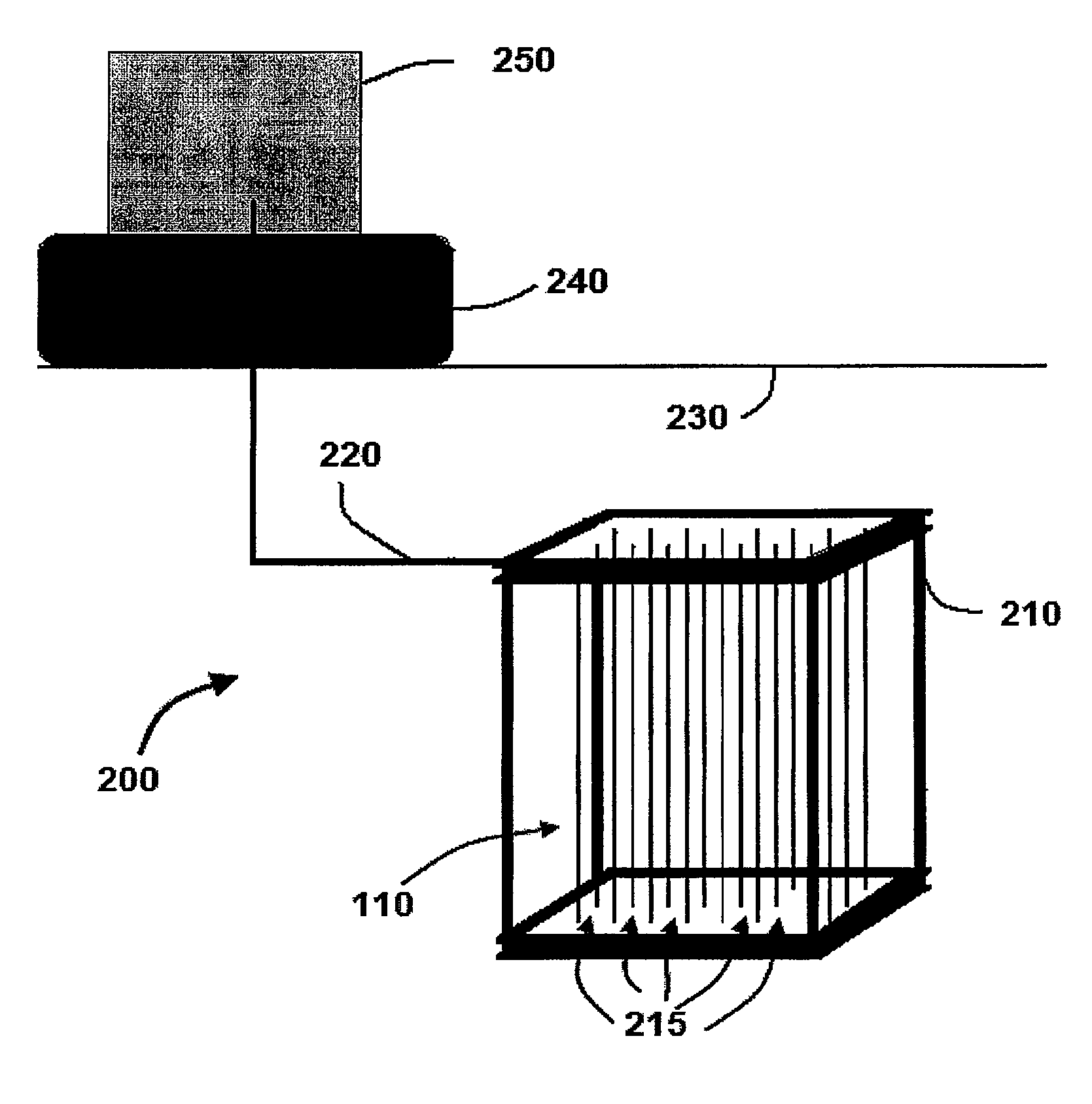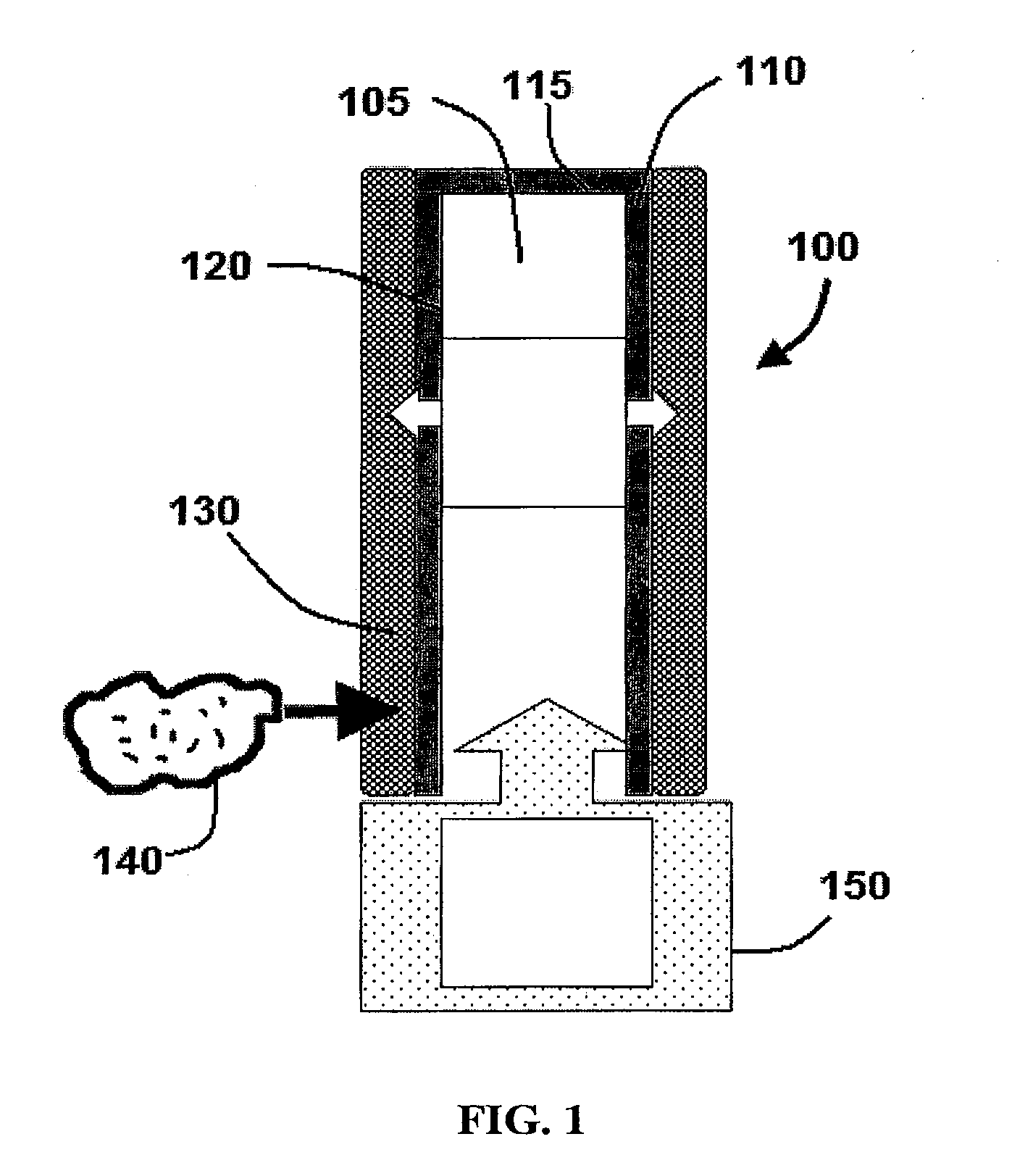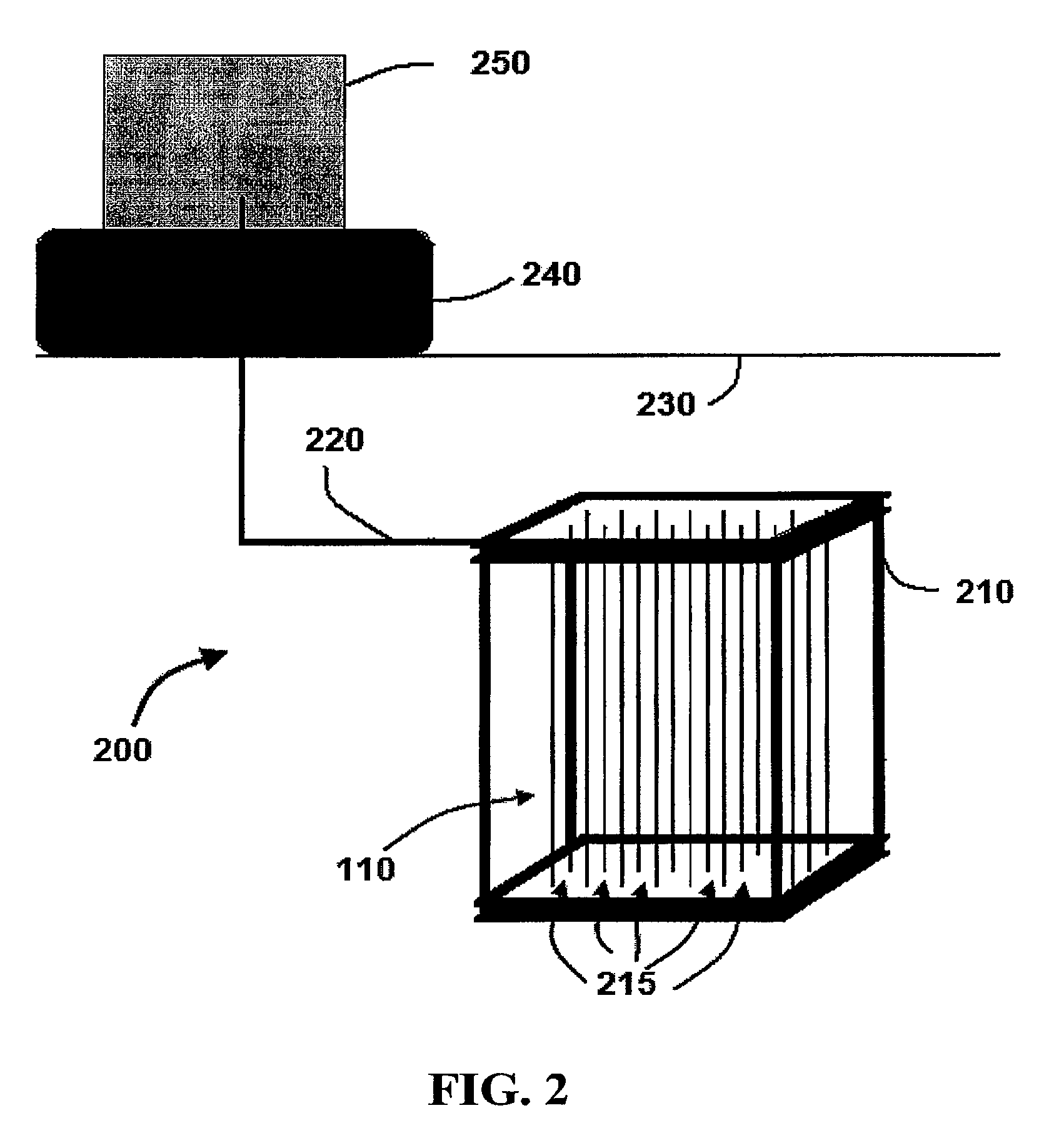Method and system for surface water treatment
a surface water treatment and system technology, applied in water cleaning, filtration separation, separation processes, etc., can solve the problems of insufficient treatment, contaminated surface water in the world, and no reliable means to remove nitrogen-containing compounds from surface water
- Summary
- Abstract
- Description
- Claims
- Application Information
AI Technical Summary
Benefits of technology
Problems solved by technology
Method used
Image
Examples
Embodiment Construction
[0006]As illustrated in the exemplary embodiment of FIG. 1, an MBfR 100 is coupled to a source of reactive gas 150. Reactive gas 150 is delivered to a lumen 105 of tubular member or a hollow fiber 110 in the MBfR 100 and diffuses through the wall 120. In exemplary embodiments, hollow fiber 110 may comprise an end member 115 such as a cap, plug, or other sealing member to restrict gas 150 from exiting lumen 105 without diffusing through wall 120. It is understood that the term “hollow” as used herein is to be interpreted broadly and does not require that the fiber or member be completely void of material in the lumen or central portion. For example, a hollow fiber may comprise a porous material in the lumen that is capable of allowing the reactive gas to pass through the material and diffuse through the wall. It is also understood that the hollow fibers may be of various sizes. For example, in certain embodiments, hollow fibers 110 may have a diameter of approximately, 10 μm, 20 μm, ...
PUM
| Property | Measurement | Unit |
|---|---|---|
| diameter | aaaaa | aaaaa |
| diameter | aaaaa | aaaaa |
| diameter | aaaaa | aaaaa |
Abstract
Description
Claims
Application Information
 Login to View More
Login to View More - R&D
- Intellectual Property
- Life Sciences
- Materials
- Tech Scout
- Unparalleled Data Quality
- Higher Quality Content
- 60% Fewer Hallucinations
Browse by: Latest US Patents, China's latest patents, Technical Efficacy Thesaurus, Application Domain, Technology Topic, Popular Technical Reports.
© 2025 PatSnap. All rights reserved.Legal|Privacy policy|Modern Slavery Act Transparency Statement|Sitemap|About US| Contact US: help@patsnap.com



